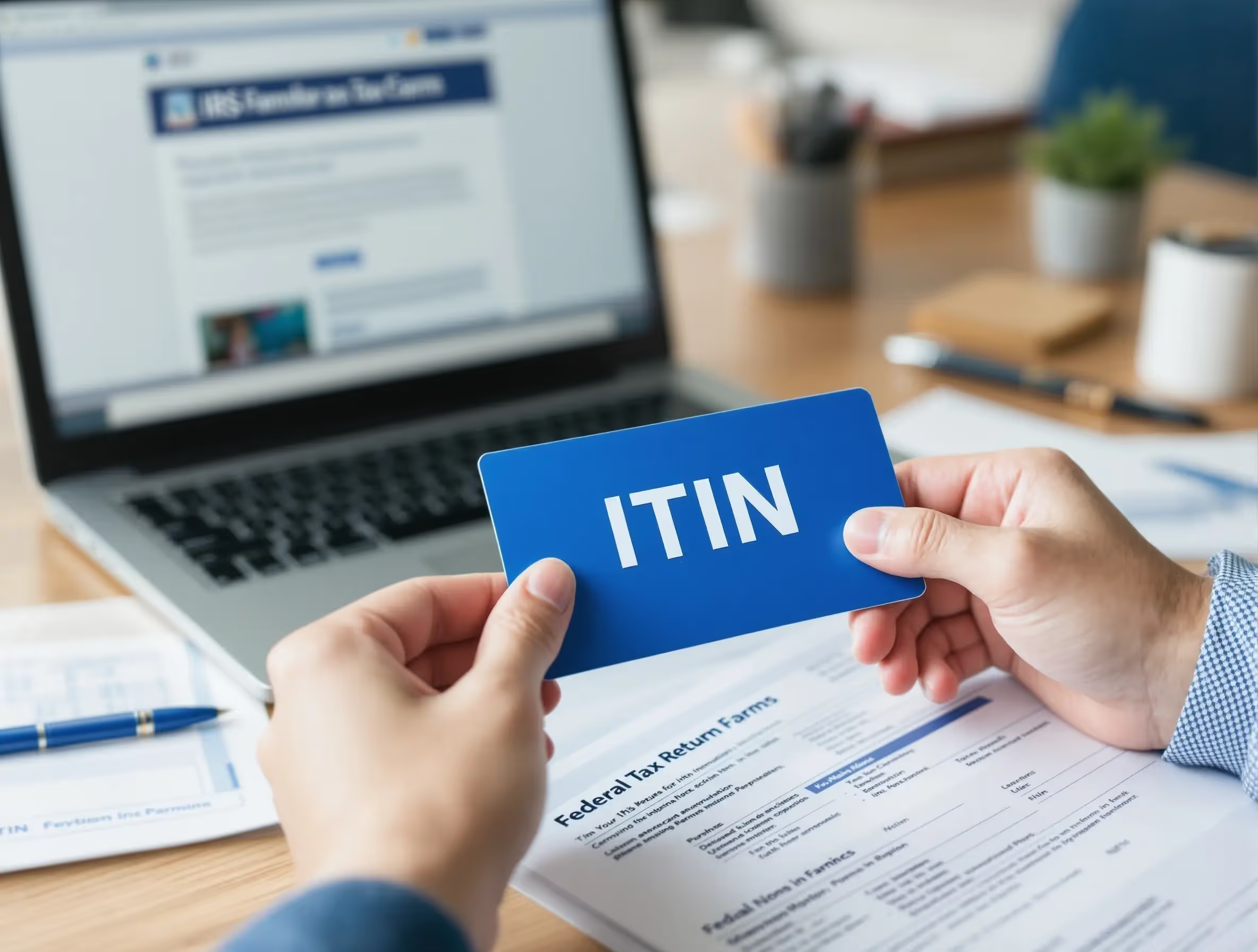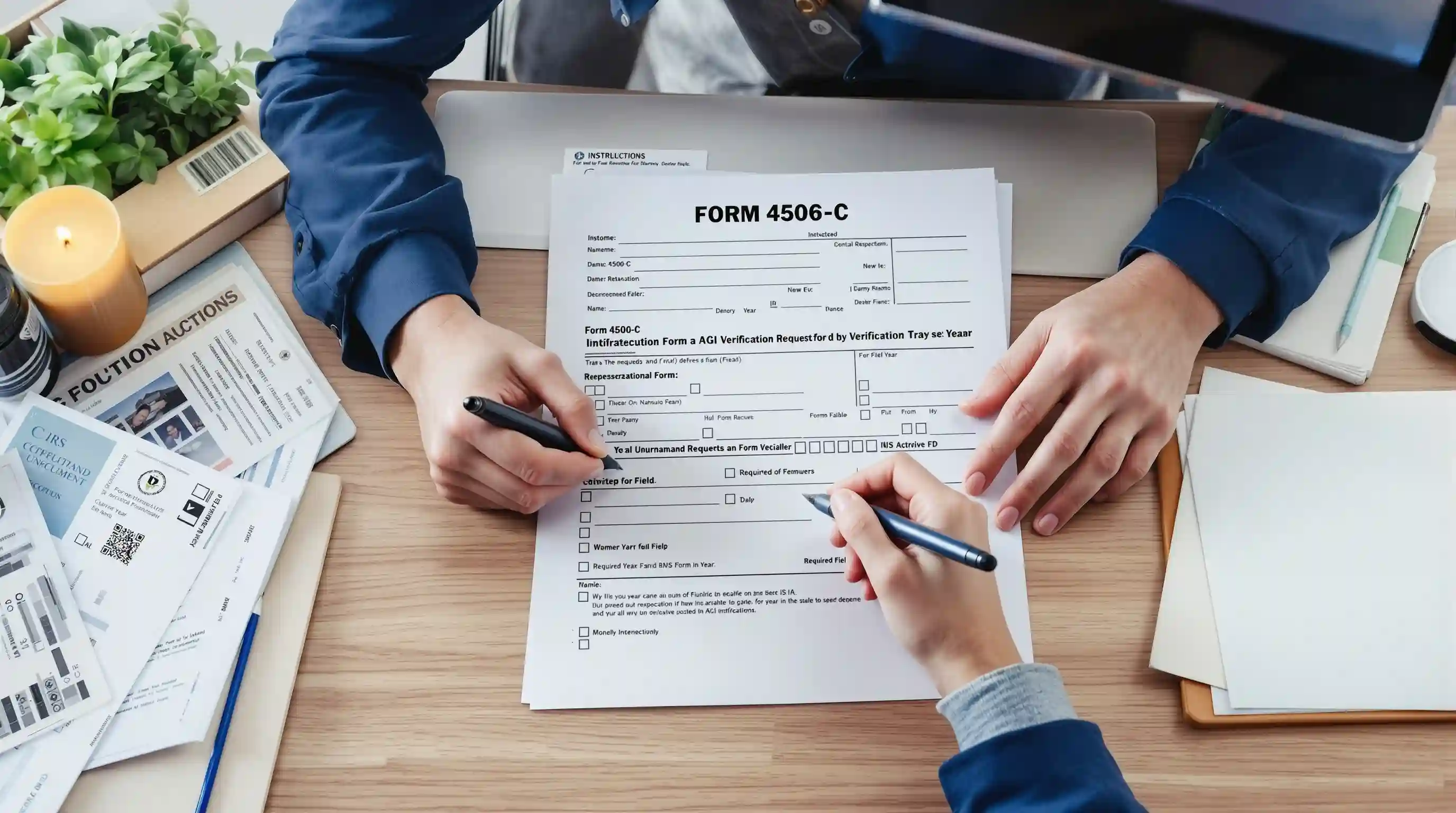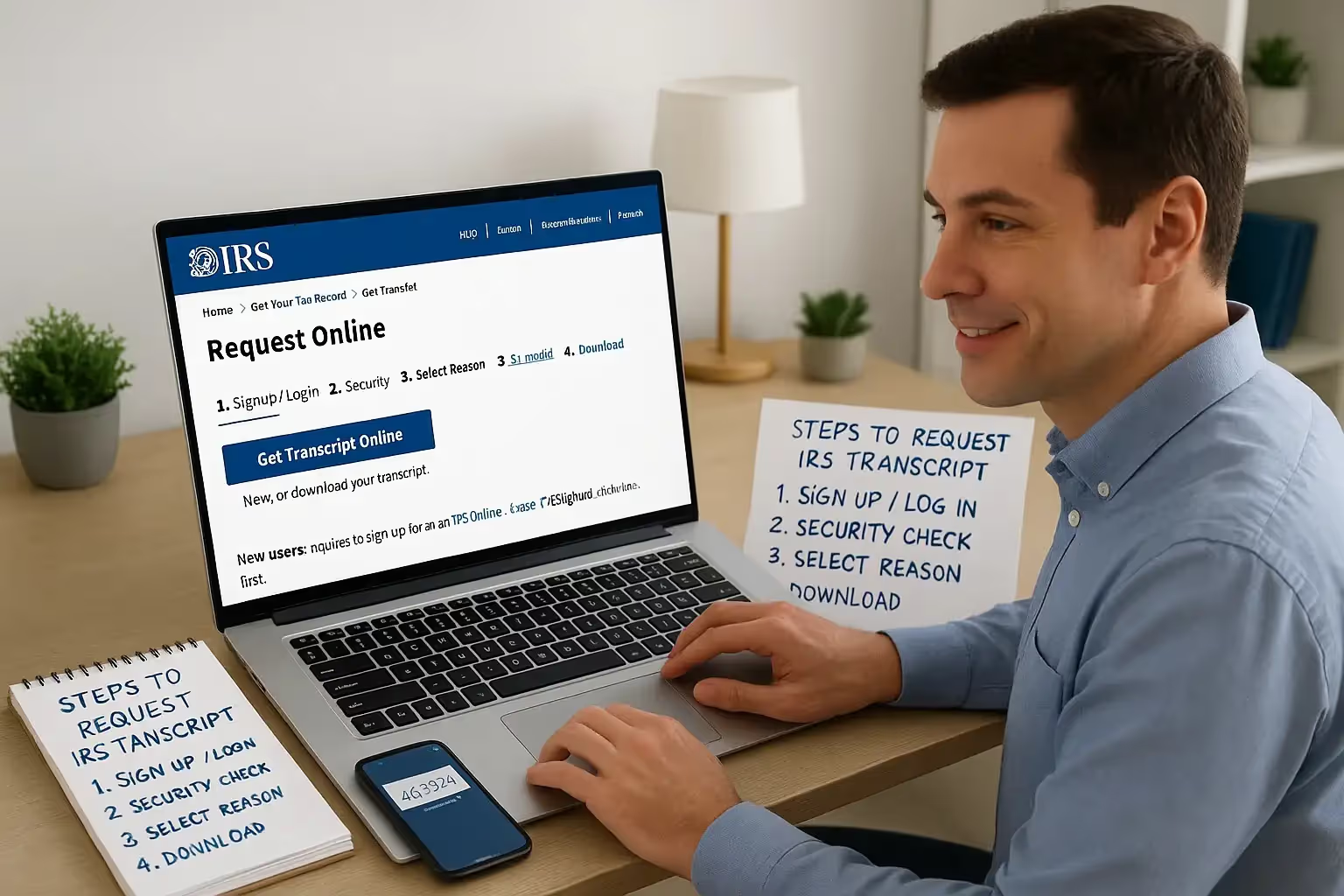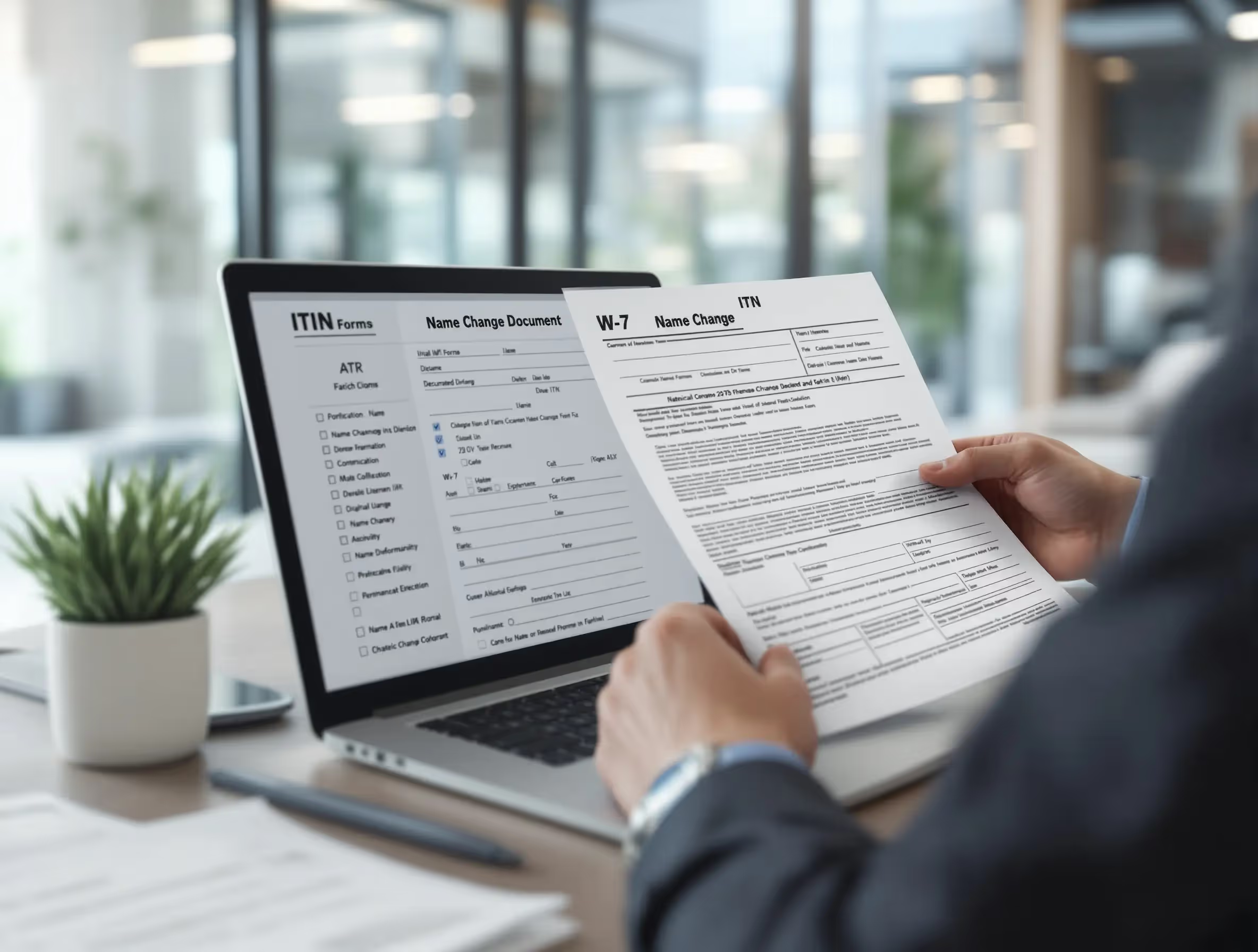Guía del formulario 8857 del IRS: Cómo solicitar ayuda a un cónyuge inocente

Cuando dos personas presentan una declaración de impuestos conjunta, ambas se hacen totalmente responsables de los impuestos, intereses y multas adeudadas. Esto se denomina responsabilidad conjunta y solidaria, y significa que el IRS puede cobrarle el monto total a cualquiera de los cónyuges, incluso si uno de ellos tuvo poco que ver con los errores de la declaración. El Servicio de Impuestos Internos creó el formulario 8857 (Solicitud de ayuda para cónyuges inocentes) para proteger a los contribuyentes en estas situaciones. Este formulario brinda a las personas una vía legal para buscar reparación cuando no deberían ser consideradas responsables por los errores de su cónyuge o excónyuge.
Los contribuyentes suelen descubrir facturas inesperadas del IRS debido a ingresos no declarados, deducciones falsas u otros errores que comete uno de los cónyuges. A veces, estos problemas solo se descubren años después, durante una auditoría, una notificación de cobro o un procedimiento judicial tributario. Sin una reparación, una persona podría verse obligada a pagar impuestos y multas adicionales causados únicamente por las acciones de su cónyuge. Presentar el formulario 8857 les permite solicitar una reparación y explicar por qué considerarlos responsables en esas circunstancias sería injusto.
Hay tres tipos de alivio disponibles a través de este proceso: alivio para cónyuges inocentes, alivio por separación de responsabilidades y alivio equitativo. Cada uno se aplica a situaciones diferentes, como estar divorciado o separado, no tener conocimiento de los errores o demostrar que sería injusto ser considerado responsable. Es fundamental actuar con rapidez porque los plazos son estrictos y esperar demasiado puede hacer perder el derecho a solicitar una indemnización por parte de un cónyuge inocente. Esta guía explica todo lo que los contribuyentes deben saber, desde la elegibilidad hasta las instrucciones de presentación y qué esperar después de enviar el formulario completo.
¿Qué es el formulario 8857?
El formulario 8857 (Solicitud de ayuda para cónyuges inocentes) es un formulario oficial del IRS que permite a los contribuyentes solicitar protección contra la responsabilidad por una factura tributaria causada por su cónyuge o excónyuge. Cuando se presenta una declaración conjunta, ambas personas son consideradas responsables por igual del saldo total. Esto significa que el IRS puede cobrarle el pago a cualquiera de las personas, independientemente de quién ganó el dinero, reclamó las deducciones o cometió el error en la declaración.
El concepto clave detrás de este formulario es la responsabilidad solidaria. Según la ley tributaria federal, una vez que una pareja presenta una declaración de impuestos conjunta, el IRS no distingue entre ellas a la hora de cobrarlas. Por ejemplo, si uno de los cónyuges oculta sus ingresos o exagera sus gastos, es posible que ambos tengan que pagar los impuestos, multas e intereses subestimados resultantes. En la práctica, esta regla suele causar dificultades a las personas que desconocían los errores y no se beneficiaron de ellos.
Existe ayuda para cónyuges inocentes para corregir este desequilibrio. Al presentar el formulario 8857, los contribuyentes pueden solicitar una compensación y demostrar que cumplen con los requisitos específicos. El IRS revisa todos los hechos y circunstancias antes de tomar una determinación final, lo que puede eliminar total o parcialmente la responsabilidad del declarante. El formulario es una salvaguardia fundamental que evita que uno de los cónyuges se vea obligado injustamente a pagar por las medidas exclusivamente responsables adoptadas por el otro.
Cuándo usar el formulario 8857
El formulario 8857 debe usarse cuando un contribuyente se enfrente a esfuerzos de recaudación del IRS o reciba avisos sobre impuestos adicionales adeudados debido a errores cometidos por un cónyuge o excónyuge. Algunos ejemplos comunes son los ingresos no declarados, las deducciones infladas o falsas o los créditos que no deberían haberse reclamado. En estos casos, el IRS responsabiliza a ambas personas bajo responsabilidad solidaria, incluso si solo su cónyuge causó el problema. Presentar el formulario 8857 es el proceso para solicitar una reparación, de modo que no se le responsabilice injustamente por esos errores.
Situaciones en las que la presentación tiene sentido
- Aviso del IRS sobre el saldo adeudado: Recibe una carta en la que se indica que adeuda impuestos, multas o intereses de una declaración conjunta.
- Hallazgos de auditoría: Una auditoría del IRS descubre problemas relacionados con los ingresos o las deducciones de su cónyuge.
- Acciones de cobro: El IRS comienza a incautar dinero mediante gravámenes, embargos o embargos salariales.
- Descubrimiento de finanzas ocultas: Se entera de que su cónyuge presentó una declaración de ingresos o deudas no declaradas de las que no estaba al tanto.
- La sentencia de divorcio establece cuestiones tributarias: Incluso después de un divorcio, el IRS aún puede perseguirlo a menos que se le otorgue una reparación.
Situaciones en las que no se aplica
- Un tribunal tributario o de otro tipo ya ha emitido una decisión final denegando la desgravación.
- Usted suscribió una oferta de compromiso que cubría la misma responsabilidad.
- Firmó un acuerdo de cierre con el IRS para los mismos años tributarios.
- Usted participó a sabiendas en los errores o tenía conocimiento real de ellos.
Plazos y límites de tiempo
Actuar con prontitud es fundamental porque los plazos de presentación pueden afectar la elegibilidad:
- Dos años desde el primer intento de cobro del IRS por un cónyuge inocente y una exención de responsabilidad por separación.
- Tres años a partir de la fecha de devolución original o dos años a partir del pago de las solicitudes de reembolso.
- Diez años a partir de la fecha de evaluación de impuestos para una desgravación equitativa de los saldos impagos.
Saber cuándo presentar el formulario 8857 ayuda a los contribuyentes a protegerse y garantiza que no pierdan la oportunidad de calificar para recibir ayuda. Presentar la solicitud cuando se da cuenta de un problema es, por lo general, el enfoque más seguro.
Requisitos de elegibilidad
No todo el mundo reúne los requisitos para la reparación de cónyuges inocentes, y el IRS aplica normas estrictas al decidir estos casos. Para tener éxito, un contribuyente debe demostrar que sus circunstancias se clasifican en una de estas tres categorías: reparación para cónyuges inocentes, compensación por separación de responsabilidades o reparación equitativa.
Cada opción tiene requisitos únicos y la elegibilidad a menudo depende del estado civil, el conocimiento de los errores y si sería injusto responsabilizar al declarante. Puede revisar Publicación 971: Alivio para cónyuges inocentes para conocer los criterios completos del IRS.
Alivio para cónyuges inocentes
Esta forma de alivio se aplica cuando uno de los cónyuges presenta una declaración de impuestos conjunta con errores causados por el otro. Para calificar, debe cumplir con las cuatro condiciones:
- Presentó una declaración conjunta para el año tributario correspondiente.
- La declaración contiene impuestos subestimados adeudados a los ingresos, deducciones o créditos de su cónyuge.
- Usted no sabía, y una persona razonable en circunstancias similares no lo habría sabido, de los errores al firmar la declaración.
- Teniendo en cuenta todos los hechos, declararlo responsable del impuesto sería injusto.
Separación de la exención de responsabilidad
Esta opción, a veces llamada ayuda al cónyuge inocente, distribuye el saldo entre los cónyuges. Puede reunir los requisitos si:
- Está divorciado, separado legalmente o ha vivido separado de su cónyuge durante al menos 12 meses.
- La sentencia de divorcio establece o los documentos legales confirman su separación.
- Puede demostrar que solo su cónyuge es responsable de los artículos que causaron los impuestos adicionales.
Alivio equitativo
El alivio equitativo es la forma más amplia de protección. Puede aplicarse si no cumples las condiciones de las otras dos opciones, pero aun así ser considerado responsable sería injusto. Esta opción puede cubrir los impuestos pendientes de pago y las situaciones relacionadas con una solicitud de reembolso de impuestos federales. El IRS analiza factores como:
- Si se benefició de los ingresos no declarados.
- Si sufrió violencia doméstica o control financiero.
- Si intentó corregir los errores una vez descubiertos.
- Su estado civil y si ahora está divorciado o separado.
Reglas estatales de propiedad comunitaria
Se aplican consideraciones especiales si vive en un estado de propiedad comunitaria, como California, Texas o Arizona. Incluso si no presentó una declaración conjunta, es posible que aún sea responsable de la mitad de los ingresos de su cónyuge según la ley estatal.
En estos casos, el IRS le permite solicitar una reparación a través del formulario 8857 para evitar una responsabilidad injusta. Al revisar cuidadosamente estas categorías, los contribuyentes pueden determinar si son elegibles para solicitar una indemnización por cónyuge inocente y qué opción se adapta mejor a su situación.
Instrucciones paso a paso para completar el formulario 8857
Completar el formulario 8857: solicitud de ayuda para cónyuges inocentes requiere precisión, detalle y documentación de respaldo. El IRS revisa cada respuesta cuidadosamente, y los pequeños errores pueden provocar demoras o denegaciones. Utilice el siguiente método paso a paso para completar el formulario correctamente. Para conocer los requisitos oficiales línea por línea, consulta el Instrucciones del IRS para el formulario 8857.
Antes de empezar: Reúna los documentos esenciales
- Declaraciones de impuestos conjuntas de los años en cuestión.
- Avisos o cartas del IRS sobre impuestos adicionales o acciones de recaudación.
- Prueba del estado civil, como un certificado de matrimonio o una sentencia de divorcio.
- Registros de ingresos, deducciones y créditos que muestren su posición.
- Documentación de respaldo de abuso o coerción, si corresponde.
- Evidencia de los pagos que realizó con su propio dinero.
Lo más destacado línea por línea
1. Líneas 1—2: El regreso conjunto y el cónyuge lesionado se superponen
- Confirme que presentó una declaración conjunta.
- Si las deudas de su cónyuge hicieron que el IRS incautara su reembolso, es posible que también deba presentar el formulario 8379 para solicitar ayuda al cónyuge lesionado.
2. Línea 3: Años tributarios
- Haga una lista de todos los años tributarios en los que solicita alivio. Sea específico, incluso si los problemas son similares a lo largo de los años.
3. Línea 5: Información personal y precauciones de seguridad
- Proporcione su nombre legal actual, dirección e información de contacto.
- Si sufrió violencia doméstica, use una dirección y un número de teléfono seguros para proteger su privacidad.
4. Línea 6: Información del cónyuge/excónyuge
- Haga una lista del cónyuge o excónyuge involucrado en la declaración.
- Incluya su número de seguro social si lo conoce.
5. Líneas 7 a 10: Estado actual
- Indique su estado civil actual.
- Indique la fecha de separación o divorcio, si corresponde.
- Indique si vivió con su cónyuge durante los 12 meses anteriores a la presentación.
6. Línea 11: Problemas de firma
- Explique detalladamente si cree que su firma fue falsificada u obtenida bajo coacción. El IRS puede tratar la declaración de impuestos como inválida.
7. Líneas 12 a 18: Explicaciones detalladas
- Describa los errores de su cónyuge, como los ingresos no declarados o las deducciones falsas.
- Explique por qué no tenía conocimiento real de estos temas.
- Incluya fechas, cantidades y circunstancias específicas.
- Presente pruebas de cómo se vio perjudicado financieramente.
8. Líneas 19 a 24: Información financiera
- Haga una lista de las transferencias de activos entre usted y su cónyuge.
- Revele cualquier beneficio financiero que haya recibido.
- Responda a las preguntas sobre su papel en la preparación de impuestos y las finanzas del hogar.
- Solicita reembolsos si pagaste con tus propios fondos.
9. Línea 25: Reembolsar la elección
- Marque esta casilla si desea que el IRS considere reembolsar los pagos realizados con su dinero. Sin este paso, el IRS no emitirá un reembolso de impuestos.
Pasos finales
- Firma y fecha: El formulario no es válido sin ambos. Guarde una copia para su registro.
- Formulario completado: Adjunte páginas adicionales si es necesario. Incluya su nombre y número de seguro social en cada página.
- Otros formularios: Considere la posibilidad de presentar los formularios relacionados, si corresponde, como el formulario 8821 para obtener autorización o el formulario 8379 si también reúne los requisitos para recibir ayuda para el cónyuge lesionado.
Enviar un formulario completo con la documentación completa aumenta sus posibilidades de éxito. El IRS decidirá su caso en función de la solidez de las pruebas y de si sería injusto considerarlo el único responsable de los errores de su cónyuge.
Cómo presentar el formulario 8857 y qué esperar
Una vez que complete el formulario 8857, el siguiente paso es presentarlo ante el Servicio de Impuestos Internos. Elegir el método de presentación correcto y comprender lo que sucede después lo ayudarán a prepararse para el proceso y a evitar un estrés innecesario.
Métodos de presentación
No puede presentar el formulario 8857 electrónicamente. Los métodos aceptados incluyen:
- Correo: Envíe el formulario completo y los documentos de respaldo a la dirección del IRS que figura en las instrucciones. El envío por correo es la opción más segura para la información confidencial.
- Servicio de entrega privado: Utilice un transportista aprobado por el IRS, como UPS o FedEx, para un seguimiento más rápido de los envíos.
- Fax: Envíe el formulario y los archivos adjuntos al número de fax específico del IRS. Esta opción funciona mejor para envíos más cortos.
Qué sucede después de la presentación
El IRS sigue un proceso de revisión estructurado una vez que recibe su solicitud:
- Revisión inicial (1 a 2 semanas): El IRS comprueba que el formulario esté firmado, fechado y completo. Se abre un expediente y usted recibe una notificación confirmando la recepción.
- Notificación al cónyuge o excónyuge (30 a 60 días): El IRS debe notificar a su cónyuge o excónyuge por ley. Están autorizados a proporcionar información o impugnar su solicitud. El IRS no compartirá sus datos de contacto, ingresos o información de su empleador.
- Período de investigación (3 a 6 meses): El IRS revisa la documentación de respaldo, las finanzas del hogar y si usted tenía conocimiento real de los errores. Evalúan si, a la luz de todos los hechos, sería injusto responsabilizarlo.
- Decisión preliminar: Ambas partes reciben una carta explicando las conclusiones del IRS. Si no está de acuerdo, tiene derecho a solicitar una apelación.
- Determinación final: El IRS emite una decisión vinculante. Si se niega, puede presentar una petición ante el tribunal tributario en un plazo de 90 días. Si se le concede, su saldo se reducirá o eliminará y el cobro se detendrá durante el año tributario afectado.
Colección Impact
Mientras el IRS revisa su caso, la mayoría de las actividades de cobro se suspenden. Esta pausa generalmente cubre los gravámenes, embargos y embargos salariales. Sin embargo, los intereses y las multas de la deuda se siguen acumulando hasta que se tome una decisión final.
La comprensión de estos pasos garantiza que sabrá qué esperar después de presentar el formulario 8857. Prepararse minuciosamente ayuda a reducir las demoras y mejora la probabilidad de un resultado favorable.
Opciones de ayuda relacionadas e interacciones con otros procesos del IRS
Presentar el formulario 8857 es una forma de solicitar protección contra la responsabilidad injusta, pero no es el único proceso disponible. Comprender en qué se diferencia la ayuda a cónyuges inocentes de otros programas del IRS ayuda a los contribuyentes a elegir el enfoque correcto y evitar complicaciones innecesarias.
Ayuda para cónyuges inocentes versus ayuda para cónyuges lesionados
- Ayuda para cónyuges inocentes (formulario 8857): Para los contribuyentes que buscan una exención de una responsabilidad conjunta causada por errores como ingresos no declarados, deducciones falsas o créditos reclamados por uno de los cónyuges.
- Ayuda al cónyuge lesionado (formulario 8379): Se aplica cuando el IRS solicita un reembolso conjunto para pagar las deudas separadas del cónyuge, como la manutención de los hijos o los préstamos federales para estudiantes. Ambos formularios involucran al cónyuge, pero resuelven problemas muy diferentes.
Cómo interactúa el formulario 8857 con otros procesos del IRS
- Acuerdos de pago a plazos: Puede solicitar un plan de pago mientras se revisa su caso. El IRS puede ajustar el plan según la determinación final.
- Ofertas en compromiso: No puede incluir la misma responsabilidad en una solicitud de oferta de compromiso y en una solicitud del formulario 8857. En primer lugar, se debe considerar la reparación de un cónyuge inocente.
- Apelaciones: Si el IRS niega su reclamación, puede presentar una apelación o una petición ante el tribunal tributario. Estas opciones le dan la oportunidad de presentar más pruebas.
- Estatuto de limitaciones de cobro (CSED): La presentación del formulario 8857 suspende el período normal de cobro de 10 años. El plazo se amplía hasta el momento en que su solicitud esté pendiente, más 60 días.
Saber cómo interactúan estas opciones de ayuda ayuda a los contribuyentes a evitar presentar el formulario incorrecto o perder oportunidades de protección. En muchos casos, consultar a un profesional de impuestos puede evitar errores costosos.
Errores comunes y cómo evitarlos
Presentar el formulario 8857: solicitud de ayuda para cónyuges inocentes puede ser complejo, e incluso los errores menores pueden retrasar el proceso o llevar a una denegación. Estar al tanto de los errores comunes ayuda a los contribuyentes a evitar contratiempos y mejora sus posibilidades de recibir ayuda.
- Faltan plazos: Muchos contribuyentes pierden la elegibilidad por esperar demasiado tiempo para presentar el Formulario 8857. Responda siempre con prontitud a una notificación del IRS y recuerde las reglas de dos, tres y diez años.
- Documentación incompleta: Enviar el formulario sin documentación de respaldo debilita su caso. Incluya los registros financieros, las transcripciones y cualquier prueba que respalde su posición.
- No solicitas reembolsos: Algunos declarantes se olvidan de comprobar la elección de reembolso en la línea 25. Sin esto, el IRS no puede devolver el dinero que pagó con sus fondos.
- Pasando por alto las reglas de propiedad comunitaria: Los contribuyentes en los estados de propiedad comunitaria pueden ser considerados responsables de la mitad de los ingresos de su cónyuge incluso sin presentar una declaración conjunta. No tener en cuenta estas reglas puede perjudicar su reclamación.
- Olvidarse de hacer un seguimiento: Muchos suponen que el IRS actuará con rapidez. En realidad, las revisiones pueden tardar meses o incluso años. Compruebe periódicamente el estado de su caso para confirmar que se está procesando su solicitud.
Evitar estos errores garantiza que su solicitud de ayuda sea más sólida y tenga más probabilidades de éxito. Tomarse el tiempo para enviar un formulario completo con todos los detalles demuestra al IRS que usted se toma en serio la resolución del problema de manera justa.
Ejemplos de casos de ayuda a cónyuges inocentes
Los ejemplos pueden ayudar a ilustrar cómo el IRS aplica la ayuda a cónyuges inocentes en situaciones de la vida real. Cada caso muestra cómo se consideran todos los hechos antes de que el IRS tome una decisión.
Ejemplo 1: Ingresos empresariales no declarados
Una maestra presentó una declaración conjunta con su esposo, que era dueño de una pequeña empresa. Más tarde, el IRS descubrió 60 000 dólares en ingresos no declarados derivados de su trabajo paralelo. Demostró que no tenía acceso a las cuentas comerciales y que no se beneficiaba del dinero. El IRS le otorgó una desgravación y dictaminó que no debía ser considerada responsable por los impuestos subestimados.
Lección: Demostrar que las finanzas están separadas fortalece una reclamación.
Ejemplo 2: Deducciones falsas
Una pareja reclamó deducciones de viaje exageradas a su regreso. El IRS rechazó el pago de 20 000 dólares durante una auditoría, lo que generó una responsabilidad adicional. La esposa explicó que confiaba en la preparación de impuestos de su cónyuge y que creía que los viajes estaban relacionados con el trabajo. El IRS otorgó un alivio parcial, reduciendo su responsabilidad pero no eliminándola.
Lección: El conocimiento limitado aún puede resultar en una responsabilidad parcial si se benefició del error.
Ejemplo 3: Complicaciones de la propiedad comunitaria
En un estado de propiedad comunitaria, una mujer descubrió después del divorcio que su excónyuge tenía ingresos de alquiler ocultos. Según la ley estatal, ella era responsable de la mitad. Presentó el formulario 8857 y solicitó una compensación equitativa, demostrando que desconocía la propiedad. El IRS estuvo de acuerdo y eliminó su responsabilidad.
Lección: Las reglas de propiedad comunitaria son estrictas, pero el alivio equitativo puede proteger a los contribuyentes en situaciones injustas.
Estos ejemplos demuestran que los resultados dependen en gran medida de las circunstancias individuales y de la evidencia proporcionada. Si bien no hay dos casos iguales, muestran cómo los contribuyentes pueden reclamar con éxito una indemnización por parte de un cónyuge inocente cuando el IRS considera que sería injusto obligarlos a pagar.
Qué hacer a continuación: medidas de acción para los contribuyentes
Actuar con rapidez y mantenerse organizado puede facilitar el proceso si cree que reúne los requisitos para recibir ayuda para cónyuges inocentes. Los siguientes pasos describen cómo seguir adelante.
- Evalúe su situación: Revise su declaración de impuestos conjunta e identifique los errores causados por su cónyuge o excónyuge. Considera si cumples con los requisitos de elegibilidad para obtener una indemnización por cónyuge inocente, la separación de responsabilidades o una reparación equitativa.
- Reúna documentos críticos: Recopile las transcripciones de impuestos, los estados de cuenta bancarios, las sentencias de divorcio y cualquier documentación de respaldo que demuestre que no estaba al tanto de los errores ni era el único responsable de ellos.
- Obtenga las transcripciones del IRS: Solicita transcripciones de tu declaración original y de la actividad de tu cuenta. Estos registros muestran con precisión lo que ve el IRS, incluidos los ajustes, las evaluaciones y los pagos.
- Busca ayuda profesional si es necesario: Los profesionales de impuestos, como los contadores públicos, los agentes inscritos o los abogados tributarios, pueden ayudar a preparar un caso más sólido, especialmente si su situación implica violencia doméstica, grandes sumas de dinero o varios años tributarios.
- Planifique para el futuro: Para evitar circunstancias similares, considere presentar la declaración por separado, mantener claros los registros financieros del hogar y asegurarse de que su papel en la preparación de impuestos esté bien documentado.
Seguir estos pasos lo ayuda a preparar una solicitud completa y aumenta la probabilidad de que el IRS decida a su favor. Actuar con prontitud demuestra responsabilidad y protege su derecho a solicitar una reparación antes de que venzan los plazos.
Preguntas frecuentes
¿Puedo presentar el formulario 8857 si sigo casado?
Puede presentar el formulario 8857 mientras esté casado, divorciado o separado. La elegibilidad no depende únicamente del estado civil. El IRS analiza si su cónyuge presentó una declaración conjunta con errores, si usted sabía de esos errores y si sería injusto considerarlo responsable bajo todos los hechos y circunstancias.
¿Qué pasa si mi cónyuge se niega a cooperar?
El IRS debe notificar a su cónyuge o excónyuge, pero no se requiere su cooperación para que usted solicite la ayuda. El IRS toma su decisión final basándose en la información proporcionada, su documentación y las normas legales. Incluso si su cónyuge no está de acuerdo o no responde, aún puede calificar si cumple con los requisitos de elegibilidad.
¿Presentar el formulario 8857 detiene los cobros del IRS?
La presentación del formulario 8857 generalmente suspende las actividades de cobro, como gravámenes, embargos y embargos salariales, mientras el IRS revisa su caso. Sin embargo, es posible que los intereses y las multas sigan acumulándose hasta que el IRS tome una determinación final. Esta pausa le da tiempo para presentar la documentación justificativa y garantiza que no tendrá que cargar injustamente con la obligación de hacer cumplir la ley mientras su reclamación esté pendiente.
¿Puedo obtener un reembolso de los pagos que ya he realizado?
Puede reunir los requisitos para recibir un reembolso de impuestos si pagó con sus fondos. Para solicitarlo, debe verificar la opción de reembolso del formulario completado en la línea 25 y demostrar que el dinero provino de usted. El IRS no considerará los reembolsos a menos que los solicites mientras solicitas ayuda.
¿Cuánto tiempo tarda el IRS en procesar el formulario 8857?
El proceso del IRS puede demorar de seis meses a dos años, según la complejidad del caso, si su cónyuge responde y la cantidad de documentación de respaldo proporcionada. Durante este tiempo, el IRS decidirá basándose en todos los hechos. Puede apelar o presentar una petición ante el tribunal tributario en un plazo de 90 días si se niega.















.avif)















































































